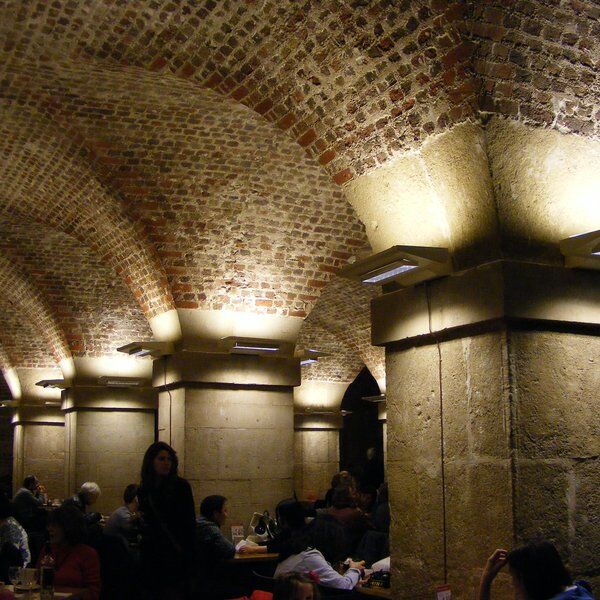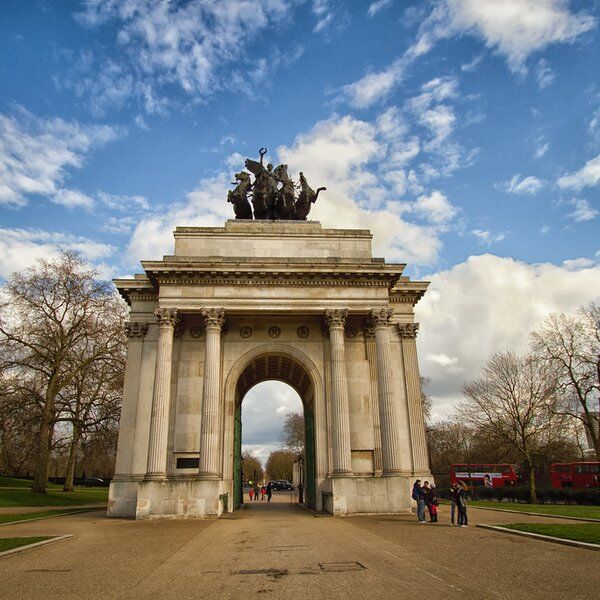Discover the Prospect of Whitby: A Riverside Pub in London
The Prospect of Whitby, located on the banks of the River Thames in the historic Wapping district, is owned and operated by Greene King, one of the UK’s largest pub retailers and brewers. Greene King has a reputation for preserving historical pubs, and The Prospect of Whitby is a cherished part of its portfolio due to its unique history and heritage as one of London’s oldest pubs.
Established in 1520, this pub combines nearly 500 years of history with the charm of London’s East End. Over the years, the Prospect of Whitby has attracted a variety of patrons from smugglers and sailors to poets and royals including Princess Margaret and Prince Rainier III of Monaco. Today, it has become renowned for its stunning views of the Thames and authentic features, including its 400-year-old stone floor.

Pelican to Prospect: The Prospect of Whitby’s History
The Prospect of Whitby began life as "The Pelican" in the early 16th century. With its riverside location, the pub quickly attracted countless figures from London’s underworld, including pirates, smugglers, and thieves, all of whom frequented the tavern’s wooden interiors to revel and conduct illegal business. The pub’s new seedy reputation soon earned it the nickname “The Devil’s Tavern.”
However, following a fire in the 18th century that destroyed much of the building, the tavern was rebuilt and rebranded as “The Prospect of Whitby,” named after a coal ship that regularly docked nearby. This new name marked a turning point in the pub's history, signalling a shift from its earlier notoriety toward a place of cultural significance.

The Execution Dock at The Prospect of Whitby
In its heyday The Prospect of Whitby, despite its dark and storied past, was also entwined with law enforcement and punishment, given its proximity to the Execution Dock. The Execution Dock witnessed executions until 1830, and pirates were commonly hanged here as a public spectacle.
The condemned were usually hanged with a shortened rope to ensure a slower death by strangulation, a brutal method intended to dissuade others from committing similar crimes. Afterward, their bodies were often tarred and displayed in gibbets along the Thames as a grim warning to those passing through the busy river.
The Prospect of Whitby, therefore, became a place of morbid intrigue, drawing crowds who watched the proceedings while drinking in the tavern or gathered along the riverbank. Today, a hangman’s noose remains on display outside the pub, a haunting reminder of the pub’s connection to the darker aspects of London’s past.

Who Was Hanged at The Prospect of Whitby?
One of the most famous figures associated with The Prospect of Whitby is the notorious “Hanging Judge,” Judge George Jeffreys. Known for his brutal rulings, Judge Jeffreys presided over the Bloody Assizes, a series of trials after the Monmouth Rebellion in 1685, where he condemned numerous rebels to death.
Although Jeffreys himself was never executed, his presence in the pub, where he supposedly watched countless executions, cemented its dark reputation. Several infamous figures who were hanged at the Execution Dock include:
- Captain William Kidd (1645–1701): One of the most famous pirates executed near The Prospect of Whitby, Captain Kidd was initially hired as a privateer to hunt pirates but eventually became one himself. His trial and execution became a spectacle, and he was hanged twice after the rope broke on the first attempt. His body was displayed in a gibbet along the Thames as a warning to others.
- Captain John Quelch (1666–1704): A privateer turned pirate, Quelch was known for his ruthless raids along the coast of Brazil. After being captured and tried in Boston, he was eventually brought to Execution Dock and hanged.
- Captain Charles Vane (1680–1721): Known for his aggressive piracy, particularly in the Caribbean, Charles Vane was infamous for his refusal to take pardons offered to pirates in exchange for peace. He was eventually captured, sent to London, and hanged at Execution Dock.
- Captain Jack Rackham (1682–1720): Also known as "Calico Jack" for his flamboyant attire, Rackham was captured in Jamaica. Though he was not hanged at Execution Dock specifically, he was hanged in Jamaica, and his exploits remain tied to London’s pirate lore.
- Captain Bartholomew Roberts (1682–1722): Though executed elsewhere, Roberts’ reputation as one of the most successful pirates of his era was notorious in London. His exploits, and eventual death, were often recounted near the site as a warning to sailors.

Inside the Prospect of Whitby
Decor and Original Features
The Prospect of Whitby is famous for its centuries-old maritime-themed interior. The pub contains dark wood panelling, one of London’s longest pewter-topped bars, and a range of nautical items such as old ship masts, barrels, and artefacts once used by sailors.
Visitors are often captivated by these authentic features, including a replica of the original ship “The Prospect of Whitby” suspended from the ceiling and a noose and gallows—reminders of the pub’s proximity to the infamous Execution Dock.
Alongside the unevenness of the pub’s 400-year-old stone floor, the hanging Chianti bottles, and its mysterious, shadowy corners, the Prospect of Whitby does an amazing job of transporting its patrons back in time.
Grade II Listing and Modern-Day Renovations
In 1950, The Prospect of Whitby was officially designated a Grade II listed building, solidifying its status as a cultural landmark. Following this designation, a major renovation in 1953 expanded the interior space while preserving the pub’s original character. Despite these updates, the tavern has retained its vintage appeal, maintaining its place as a riverside staple in London’s pub scene.

The Prospect of Whitby in Popular Culture
Literature and Art
Beyond the shady pirate types, The Prospect of Whitby has attracted a variety of characters from London’s cultural scene, from iconic legends such as Frank Sinatra to writers and artists. Each drawn to its unique character and stunning riverside views.
J.M.W. Turner and James Abbott McNeill Whistler, two acclaimed painters, often frequented the pub, capturing the ethereal beauty of the Thames in works like Turner’s The Fighting Temeraire and Whistler’s Nocturne: Blue and Gold – Old Battersea Bridge. The setting became a muse for these artists, infusing their pieces with the atmosphere of the Wapping area.
The Prospect of Whitby also surfaces in popular novels, from Anna Harrington’s Regency-era romance novels to Simon Michael’s legal thrillers, where it serves as both setting and inspiration. Additionally, author Charles Dickens, known for his vivid portrayals of London, is said to have drawn inspiration from The Prospect of Whitby for scenes in Our Mutual Friend.
Cinematic Connections
In the world of film and literature, The Prospect of Whitby has appeared in various scenes and inspired several writers. In the 1956 film D-Day the Sixth of June, Robert Taylor and Dana Wynter’s characters share a quiet moment in the pub during the wartime era, underscoring the Prospect’s role as a timeless backdrop. Gilbert O'Sullivan’s “Nothing Rhymed” music video was also filmed here, reflecting the pub’s continued influence on British pop culture.
The pub even plays a role in classic British television, making a brief appearance in an episode of Only Fools and Horses and being referenced in The League of Extraordinary Gentlemen comic book series. Most recently, it was the location for the climactic scenes of The Old Guard (2020).

Visiting The Prospect of Whitby
Today, a visit to The Prospect of Whitby is as close as you can get to experiencing London’s historical riverside culture. The terrace offers a spectacular view of the Thames, a perfect spot to enjoy classic British fare—like fish and chips or steak and ale pie—while watching boats pass by on the river.
Visitor Information
- Address: 57 Wapping Wall, London E1W 3SH
- Nearest Station: Wapping (Overground)
- Opening Hours: Monday–Saturday, 11:00 am – 11:00 pm | Sunday, 12:00 pm – 10:30 pm.
- Food Serving Times: Monday–Saturday, 12:00 pm – 9:00 pm | Sunday, 12:00 pm - 8:00 pm
To fully experience the pub’s atmosphere, consider visiting during off-peak hours.

Hidden Gems and Attractions Near The Prospect of Whitby
Beyond the Prospect of Whitby, London’s East End offers a wealth of unique attractions:
- The Pelican Stairs: An alleyway in East London that runs alongside The Prospect of Whitby and leads to a hidden London beach.
- Columbia Road Flower Market: A Sunday market brimming with colourful blooms, perfect for a morning stroll.
- Clissold Park: Ideal for a relaxing afternoon, with green spaces, ponds, and a charming animal enclosure.
- Fitzroy House: Discover literary history at this historic house, once frequented by notable authors.
- The Hunterian Museum: Located 4.5 miles away, this museum showcases historical anatomical collections.
To discover other notable London pubs, click here: Blind Beggar Pub - London, United Kingdom | CityDays.

Explore Beyond the Prospect of Whitby with CityDays
The Prospect of Whitby may be one of London’s oldest pubs, but the UK’s capital city has so much more to offer, and the best way to discover more hidden gems around London is to take your time and, ideally, have a pre-planned route that takes you past all the noteworthy nooks and hidden gems.
We can help you there!
The City combines the fun of an outdoor treasure hunt with the historic facts and whimsical trivia of a walking tour.
Answer riddles, solve puzzles and learn more about London’s 2000-year-old history in a new and interactive way!
Take the stress out of planning your visit to London and book your adventure today!
Not visiting London this time? Don’t worry, you’ll find us all over the world.
















